Written by Bhagwati Prasad Semwal VU3BPZ-8T2BH
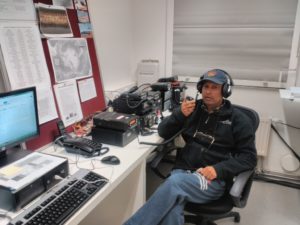 Antarctic Epic did start long ago with no way to communicate from Antarctica to the rest of the world, then Guglielmo Marconi, an Italian inventor and electrical engineer, known for his pioneering work on long-distance radio transmission and for his development of radio telegraph system, show the world the power of Radio transmission.
Antarctic Epic did start long ago with no way to communicate from Antarctica to the rest of the world, then Guglielmo Marconi, an Italian inventor and electrical engineer, known for his pioneering work on long-distance radio transmission and for his development of radio telegraph system, show the world the power of Radio transmission.
Later one after WW1 & WW2 the Nations signed the Antarctic Treaty and the Antarctic Adventure begun. From that time, in the 50thies, the Radio was the unique way to be in touch from the newly built Antarctic Research Stations and therest of the world.
From that time, being a licensed Radio Amateur was a privilege of few technicians involved in the Antarctic Campaigns and being Radio Amateur, they were mostly communication officers. After the commercial duties and communication with their country’s Antarctic Departments, they had time to use the Base Equipments to talk to the family using other Ham fellows with Phone Patch to talk to their families, and to other Ham radio men, all over the world.
A new era did start: DX with Antarctica and yes, a contact using a simple Radio transceiver from Antarctica to the rest of the world was, and is still amazing. The interest did grow fast and became a fever, a real excitement a real passion.
At that time every Antarctic Base, every Refuge, every remote camp was equipped with Transceiver for HF communications, antenna, generator or other power supply sources.
Most of the Bases did install big towers and rotary antenna system, using amplifiers to allow more chance to send robust signals on the air. On the other side, the worldwide Ham community, hunting contacts with Antarctica, did the same; all involved in a kind of passion for the so called very long distance call, known as DX.
 QSL confirmation for a contact with an Antarctic Station was, and still is something to exhibit. On the meantime the first websites dedicated to the Antarctic Chasers did start to be online, as for example WAP-Worldwide Antarctic Program www.waponline.it since 1979. On it several features such as the most accurate Dbase (WAP-WADA) of Antarctic Stations, Remote Camps, Refuges, Huts and permanent settlements sorted by Country, Lat & Long and exact location.
QSL confirmation for a contact with an Antarctic Station was, and still is something to exhibit. On the meantime the first websites dedicated to the Antarctic Chasers did start to be online, as for example WAP-Worldwide Antarctic Program www.waponline.it since 1979. On it several features such as the most accurate Dbase (WAP-WADA) of Antarctic Stations, Remote Camps, Refuges, Huts and permanent settlements sorted by Country, Lat & Long and exact location.
Another huge Dbase (WAP-WACA) has been built; it lists over 4500 different callsigns in use or used in the past in Antarctica, Sub & Peri Antarctic areas, all available for free on line.
Time goes fast and we did enter quickly in the era of Internet. Very few young boys are still excited or fascinated by Ham radio, even if in Antarctica HF & VHF communications are still important and very much used to keep and establish contacts with remote field camps, with the researchers working outside, and with the helicopters or aircrafts to the main Stations or Bases.
Radio is probably considered by the young generation somewhat obsolete, something surpassed, something out of fashion … nothing could be more wrong! Radio remains a safe option in case of emergency, when internet black out, when other communication devises may fail, the radio remains, it does not need repeaters, as the radio waves propagate in space!
HF transmissions are therefore subjected to the Propagation condition which is influenced by the solar activity and in particular periods of the year, operators must know the MUF (Maximum Usable Frequency) and check Propagation Prediction tables in order to know when and in which direction looking for to make some possible contacts
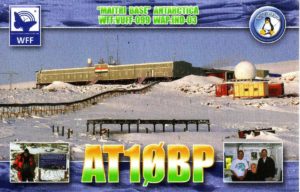 Bhagwati Prasad Semwal is a good experienced Ham Radio Operator, licensed as VU3BPZ, and operating from Antarctica since 2001. Bagwati Prasad (Ex-20,24,29th, Maitri & 31th,Bharati, WOT )has been active from several Antarctic sites as VU3BPZ/P, VU3BPZ/RI1, AT1ØBP, VU3BPZ/MM and actually he is part of the 35th ISEA (2015-2016) based at Bharati Station (69°S, 076°E), Larsemann Hills, Antarctica where he operates as 8T2BH.
Bhagwati Prasad Semwal is a good experienced Ham Radio Operator, licensed as VU3BPZ, and operating from Antarctica since 2001. Bagwati Prasad (Ex-20,24,29th, Maitri & 31th,Bharati, WOT )has been active from several Antarctic sites as VU3BPZ/P, VU3BPZ/RI1, AT1ØBP, VU3BPZ/MM and actually he is part of the 35th ISEA (2015-2016) based at Bharati Station (69°S, 076°E), Larsemann Hills, Antarctica where he operates as 8T2BH.
Worldwide Ham Radio Community is grateful to the Indian Antarctic Dept. for putting licensed Ham radio operators among the Teams overwintering in Antarctica; India did a real great job with the Hams involved in Antarctica up to now; a mention has to be given to:
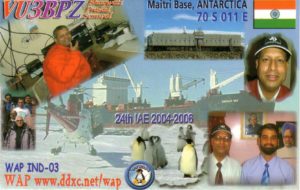 ATØA operating from Daskshin Gangotry Base in the 8Øties, AT3D, VU3HKQ, VU2AXA, VU2JBK, VU3RAY, VU2DMT who have been active from Maitri Base, Indian Bay and Bharati Stations giving a huge number of Antarctic chasers worldwide, a chance to log all the 3 main Indian Scientific Stations in their log with different callsigns.
ATØA operating from Daskshin Gangotry Base in the 8Øties, AT3D, VU3HKQ, VU2AXA, VU2JBK, VU3RAY, VU2DMT who have been active from Maitri Base, Indian Bay and Bharati Stations giving a huge number of Antarctic chasers worldwide, a chance to log all the 3 main Indian Scientific Stations in their log with different callsigns.
Actually propagation is not in a good shape; solar flux, sunspot and A index are at a low level, but taking care of the rare openings on different bands, is possible to establish good contacts with a range of 10-15.000 km.
What is actually missed in the Indian Bases is a rotating Log periodic beam antenna, able to cover all HF bands in case of internet black out or emergency, a liner amplifier in order to ensure a robust signal in case of lack of propagation.
In addition another tool is available for Hams, and that is the VOACAP Prediction available online at:
http://www.voacap.com/prediction.html .
This web site gives an idea to a Radio operator which band of the HF Band plan is the best one to be used and percentage of chances to make good contacts. Actually conditions are very low and infact just the bands from 18 to 24 MHz offer 40% of possibility to make contacts.
During the 35th Indian Antarctic Scientific Expedition (2015-2016) we did a lot of propagation testing on different bands from 10 mts through 40 mts SSB and we noticed a very fast changing conditions and so far only about 100 QSOs have been made as 8T2BH from Bharati Station, even if with 15 different Countries. Nothing to compare with 2011-2012’s season when the QSOs made were over 1000, or from Maitri Station where conditions were so much favorable.
Now it could be propagation will change, no more Auroras or magnetic storms which are causing terrific noise on the band. I hope to be able to keep uphold the Indian pride and using the privilege to be here in Antarctica for the 5th time as Ham Radio and Communication Officer to fulfill the many requests for QSOs by Radio amateurs operators around the world.
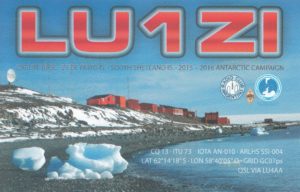 Carlini is a permanent Antarctic Scientific Station, located at 25 de Mayo Is. (aka King George Is.), in the South Shetland Islands. It is operated and administrated by the National Antarctic Division (DNA) of the Foreing Affairs Ministry of Argentina.
Carlini is a permanent Antarctic Scientific Station, located at 25 de Mayo Is. (aka King George Is.), in the South Shetland Islands. It is operated and administrated by the National Antarctic Division (DNA) of the Foreing Affairs Ministry of Argentina.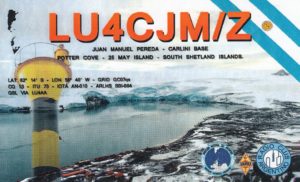
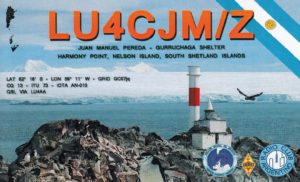 Francisco de Gurruchaga Antarctic Refuge (62°14′ 03″ South, 59°10′ 02″ West) built on Dec. 15, 1954 is placed in Harmony Point, Nelson Island, South Shetland Island. The administration depends on the Argentinian Naval Army. Proposed by Argentina, this area was originally designated as Site of Special Scientific Interest No. 14 under Antarctic ATCM Recommendation XIII-8 (1985), because the Area is an excellent example of the maritime Antarctic communities of birds and land ecosystems present in South Shetland Islands, making possibilities to carry out long-term research programs without damage or harmful interference.
Francisco de Gurruchaga Antarctic Refuge (62°14′ 03″ South, 59°10′ 02″ West) built on Dec. 15, 1954 is placed in Harmony Point, Nelson Island, South Shetland Island. The administration depends on the Argentinian Naval Army. Proposed by Argentina, this area was originally designated as Site of Special Scientific Interest No. 14 under Antarctic ATCM Recommendation XIII-8 (1985), because the Area is an excellent example of the maritime Antarctic communities of birds and land ecosystems present in South Shetland Islands, making possibilities to carry out long-term research programs without damage or harmful interference.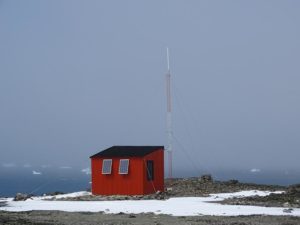 Antarctic Refuges are facilities open to all countries, to be used in emergencies or to support activities in the field. They are equipped with provisions, fuel, generators and communications equipment, accommodation facilities and other logistics.
Antarctic Refuges are facilities open to all countries, to be used in emergencies or to support activities in the field. They are equipped with provisions, fuel, generators and communications equipment, accommodation facilities and other logistics.
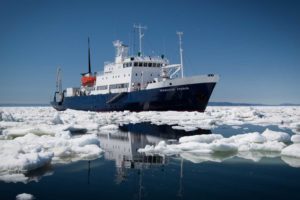 Plans appear to be melding together for a Maritime Mobile Expedition to the shores of Antarctica in February 2018.
Plans appear to be melding together for a Maritime Mobile Expedition to the shores of Antarctica in February 2018.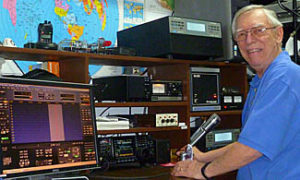
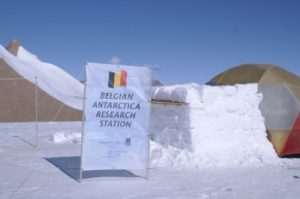 When we went across some notes, we found that, while studying a best location site to install its New Antarctic Station, a Belgian Team, went to Antarctica and set a Base Camp called Utsteinen camp which was fully operational for few months.
When we went across some notes, we found that, while studying a best location site to install its New Antarctic Station, a Belgian Team, went to Antarctica and set a Base Camp called Utsteinen camp which was fully operational for few months.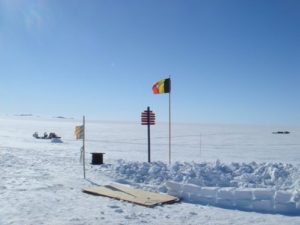
 A brief history: The Republic of Belarus joined the Antarctic Treaty in 2006 and, in that same year, approved the National program for Polar research which is called “Monitoring of Earth’s Polar areas” ensuring activity of the Arctic and Antarctic expeditions for 2007-2010 and for the period until 2015. Soon after, in 2008, it ratified the Environmental Protocol.
A brief history: The Republic of Belarus joined the Antarctic Treaty in 2006 and, in that same year, approved the National program for Polar research which is called “Monitoring of Earth’s Polar areas” ensuring activity of the Arctic and Antarctic expeditions for 2007-2010 and for the period until 2015. Soon after, in 2008, it ratified the Environmental Protocol. The main principles of activity of the Republic of Belarus in Antarctica are a system approach to the creation of the national Antarctic infrastructure and the organization of research, orientation of works for integration to international research programs, development of international cooperation in order to strengthen the Antarctic Treaty System, as well as development, consideration and recommendation to their Government of actions assisting in realization of principles and objects of the Antarctic Treaty.
The main principles of activity of the Republic of Belarus in Antarctica are a system approach to the creation of the national Antarctic infrastructure and the organization of research, orientation of works for integration to international research programs, development of international cooperation in order to strengthen the Antarctic Treaty System, as well as development, consideration and recommendation to their Government of actions assisting in realization of principles and objects of the Antarctic Treaty.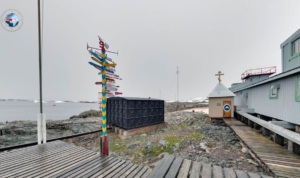 “When we send polar explorers to the South Pole we don’t ask about their confession, but every person can have a wish to be alone, to pray. Why don’t we build a church?” said Director of the National Ukrainian Antarctic Scientific Center, Valery Litvinov .
“When we send polar explorers to the South Pole we don’t ask about their confession, but every person can have a wish to be alone, to pray. Why don’t we build a church?” said Director of the National Ukrainian Antarctic Scientific Center, Valery Litvinov .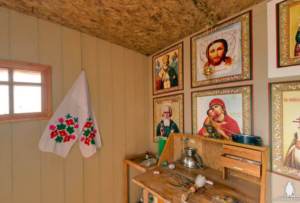
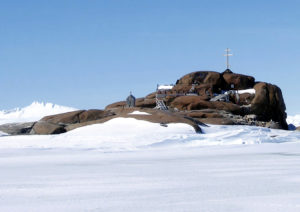 Buromskiy Island holds a Cemetery for several citizens of the Soviet Union, Czechoslovakia, German Democratic Republic and Switzerland who died in the performance of their duties while serving as members of Soviet and Russian Antarctic expeditions. It has been designated a Historic Site or Monument (HSM 9) following a proposal by Russia to the Antarctic Treaty Consultative Meeting
Buromskiy Island holds a Cemetery for several citizens of the Soviet Union, Czechoslovakia, German Democratic Republic and Switzerland who died in the performance of their duties while serving as members of Soviet and Russian Antarctic expeditions. It has been designated a Historic Site or Monument (HSM 9) following a proposal by Russia to the Antarctic Treaty Consultative Meeting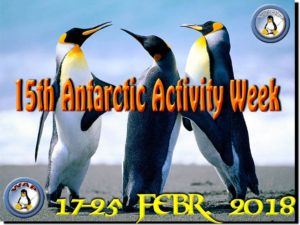 John Landrigan KA4RXP will be active as KA4RXP/MM from on board of M/V Spirit of Enderby from Febr. 8 through March 8 sailing Antarctica. The operation time falls in between the 15th Antarctic Activity Week.
John Landrigan KA4RXP will be active as KA4RXP/MM from on board of M/V Spirit of Enderby from Febr. 8 through March 8 sailing Antarctica. The operation time falls in between the 15th Antarctic Activity Week.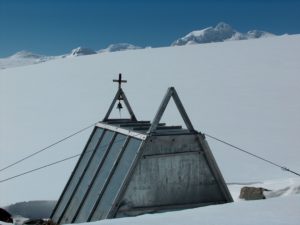 The Orthodox presence in Antarctica arises as parts of various expeditions from major Orthodox Christian Nations to the continent as there is not permanent population in Antarctica.
The Orthodox presence in Antarctica arises as parts of various expeditions from major Orthodox Christian Nations to the continent as there is not permanent population in Antarctica.
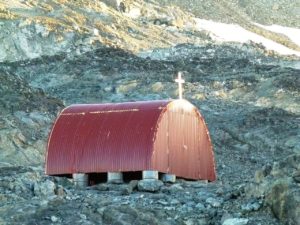 people, geologists, biologists, doctors, meteorologists, botanists and others .
people, geologists, biologists, doctors, meteorologists, botanists and others .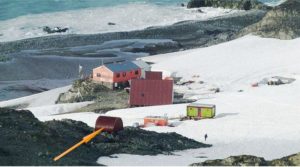
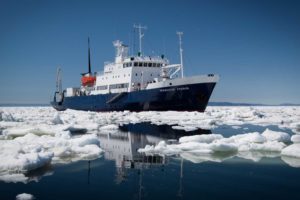 John wrote: -The 50-passenger M/V Spirit of Enderby is described as an ‘intimate’ exploration vessel with a reinforced hull. It apparently is pretty cramped and the bathroom is down the hall. The Captain and crew are Russian and I was advised to bring a potent surge protector .
John wrote: -The 50-passenger M/V Spirit of Enderby is described as an ‘intimate’ exploration vessel with a reinforced hull. It apparently is pretty cramped and the bathroom is down the hall. The Captain and crew are Russian and I was advised to bring a potent surge protector .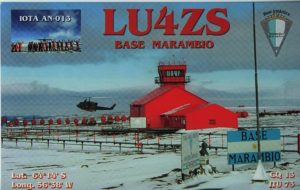 On last March 11, the Radio station LU4ZS at Base Marambio did start the 2016 Ham Activation, promoting the continuity of successful Radio-Amateur operation of the past 2013/14 Antarctic campaign, in which hundreds of Shortwave contacts were made worldwide. This year 2017, it has been planned to carry out another activation.
On last March 11, the Radio station LU4ZS at Base Marambio did start the 2016 Ham Activation, promoting the continuity of successful Radio-Amateur operation of the past 2013/14 Antarctic campaign, in which hundreds of Shortwave contacts were made worldwide. This year 2017, it has been planned to carry out another activation.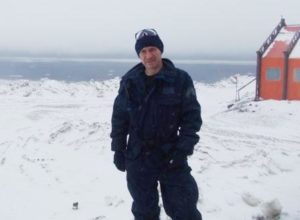

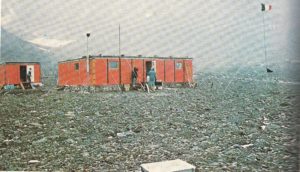 December 1975: 15 Italians did challenge the climatic conditions, economic difficulties and political inertia to build a Base in the coldest and inhospitable site of the planet, with temperatures that in the “hot” months reach 19 degrees below zero and during the long winter of the sub-southern hemisphere go down to -50°C. The Expedition arrives before the accession of Italy to the Antarctic Treaty, before the PNRA, the National Research Program at the South Pole.
December 1975: 15 Italians did challenge the climatic conditions, economic difficulties and political inertia to build a Base in the coldest and inhospitable site of the planet, with temperatures that in the “hot” months reach 19 degrees below zero and during the long winter of the sub-southern hemisphere go down to -50°C. The Expedition arrives before the accession of Italy to the Antarctic Treaty, before the PNRA, the National Research Program at the South Pole.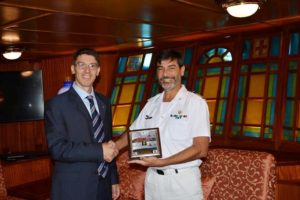 Everything else has disappeared in nothing” wrote Renato Cepparo in his memories.
Everything else has disappeared in nothing” wrote Renato Cepparo in his memories.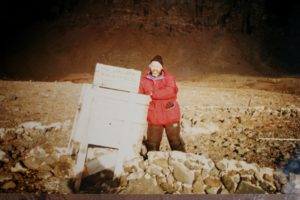 Stanislaw Miranski SP3BGD, send us a picture taken in April 1998. Here is the remains of Italian Antarctic Station “Giacomo Bove” – Italia Valley on King George island.
Stanislaw Miranski SP3BGD, send us a picture taken in April 1998. Here is the remains of Italian Antarctic Station “Giacomo Bove” – Italia Valley on King George island.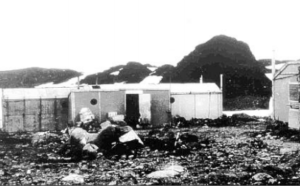 The Station with two buildings able to guest 8 people, was originally built by the Soviet Antarctic Expeditions the Oct. 16th 1956 and named Oazis then, on 23rd January 1959, it has been handed over to the Academy of Sciences of the Polish People’s Republic by the Soviet Academy. The Polish named it Dobrowolski Station in memory of Antoni B. Dobrowolski (1872-1954), geophysicist and glaciologist, who participated in the Belgica Antarctic Expedition (1877-79).
The Station with two buildings able to guest 8 people, was originally built by the Soviet Antarctic Expeditions the Oct. 16th 1956 and named Oazis then, on 23rd January 1959, it has been handed over to the Academy of Sciences of the Polish People’s Republic by the Soviet Academy. The Polish named it Dobrowolski Station in memory of Antoni B. Dobrowolski (1872-1954), geophysicist and glaciologist, who participated in the Belgica Antarctic Expedition (1877-79). 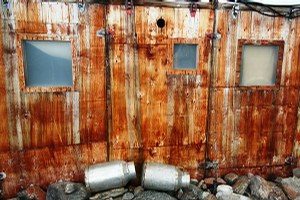
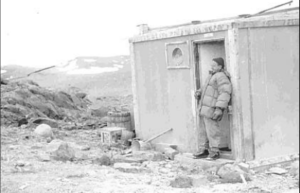 The Soviet Union became interested in the Bunger Hills again in the late 1980s, and built a new station – Oazis-2 – a few hundred meters to the west of Dobrowolski. The station was used for summer visits up to the mid-1990s (Bunger Oasis Station WAP RUS-NEW)
The Soviet Union became interested in the Bunger Hills again in the late 1980s, and built a new station – Oazis-2 – a few hundred meters to the west of Dobrowolski. The station was used for summer visits up to the mid-1990s (Bunger Oasis Station WAP RUS-NEW)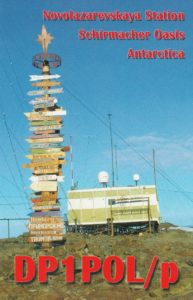 Felix Riess (DL5XL) has been active as DP1POL/p for a short period of time from the Russian Station Novolazarevskaya (WAP RUS-Ø9) while waiting the ALCI flight from Novo Runway (WAP MNB-Ø6) to Cape Town.
Felix Riess (DL5XL) has been active as DP1POL/p for a short period of time from the Russian Station Novolazarevskaya (WAP RUS-Ø9) while waiting the ALCI flight from Novo Runway (WAP MNB-Ø6) to Cape Town.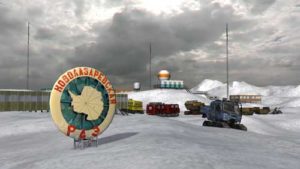
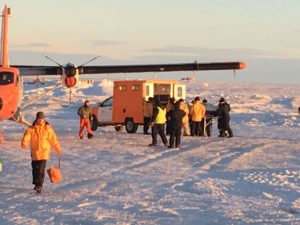 In an unprecedented operation, the Argentinean Armed Forces planned a medical evacuation of the second officer, electrician Héctor Bulacio, from the Orcadas Base to the hospital in Ushuaia. The 38-year-old man was in danger if thye did not move him; he had suffered fractures in his legs. A Rescue by sea was impossible because in winter time the Base is surrounded by 110 kilometers of ice field.
In an unprecedented operation, the Argentinean Armed Forces planned a medical evacuation of the second officer, electrician Héctor Bulacio, from the Orcadas Base to the hospital in Ushuaia. The 38-year-old man was in danger if thye did not move him; he had suffered fractures in his legs. A Rescue by sea was impossible because in winter time the Base is surrounded by 110 kilometers of ice field. Antarctic Epic did start long ago with no way to communicate from Antarctica to the rest of the world, then Guglielmo Marconi, an Italian inventor and electrical engineer, known for his pioneering work on long-distance radio transmission and for his development of radio telegraph system, show the world the power of Radio transmission.
Antarctic Epic did start long ago with no way to communicate from Antarctica to the rest of the world, then Guglielmo Marconi, an Italian inventor and electrical engineer, known for his pioneering work on long-distance radio transmission and for his development of radio telegraph system, show the world the power of Radio transmission. QSL confirmation for a contact with an Antarctic Station was, and still is something to exhibit. On the meantime the first websites dedicated to the Antarctic Chasers did start to be online, as for example WAP-Worldwide Antarctic Program
QSL confirmation for a contact with an Antarctic Station was, and still is something to exhibit. On the meantime the first websites dedicated to the Antarctic Chasers did start to be online, as for example WAP-Worldwide Antarctic Program  Bhagwati Prasad Semwal is a good experienced Ham Radio Operator, licensed as VU3BPZ, and operating from Antarctica since 2001. Bagwati Prasad (Ex-20,24,29th, Maitri & 31th,Bharati, WOT )has been active from several Antarctic sites as VU3BPZ/P, VU3BPZ/RI1, AT1ØBP, VU3BPZ/MM and actually he is part of the 35th ISEA (2015-2016) based at Bharati Station (69°S, 076°E), Larsemann Hills, Antarctica where he operates as 8T2BH.
Bhagwati Prasad Semwal is a good experienced Ham Radio Operator, licensed as VU3BPZ, and operating from Antarctica since 2001. Bagwati Prasad (Ex-20,24,29th, Maitri & 31th,Bharati, WOT )has been active from several Antarctic sites as VU3BPZ/P, VU3BPZ/RI1, AT1ØBP, VU3BPZ/MM and actually he is part of the 35th ISEA (2015-2016) based at Bharati Station (69°S, 076°E), Larsemann Hills, Antarctica where he operates as 8T2BH. ATØA operating from Daskshin Gangotry Base in the 8Øties, AT3D, VU3HKQ, VU2AXA, VU2JBK, VU3RAY, VU2DMT who have been active from Maitri Base, Indian Bay and Bharati Stations giving a huge number of Antarctic chasers worldwide, a chance to log all the 3 main Indian Scientific Stations in their log with different callsigns.
ATØA operating from Daskshin Gangotry Base in the 8Øties, AT3D, VU3HKQ, VU2AXA, VU2JBK, VU3RAY, VU2DMT who have been active from Maitri Base, Indian Bay and Bharati Stations giving a huge number of Antarctic chasers worldwide, a chance to log all the 3 main Indian Scientific Stations in their log with different callsigns.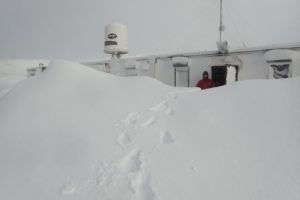 The station was established on 26 February 1977.
The station was established on 26 February 1977.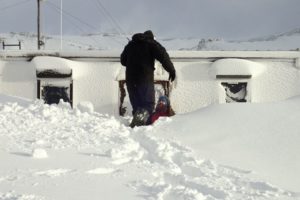
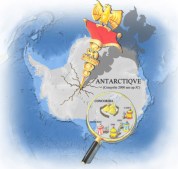 The sixteenth edition (release 1.30) of WAP WACA & WADA Directories are available to download. Just go to the “Download Section” and feel free to save them both on your PC.
The sixteenth edition (release 1.30) of WAP WACA & WADA Directories are available to download. Just go to the “Download Section” and feel free to save them both on your PC.